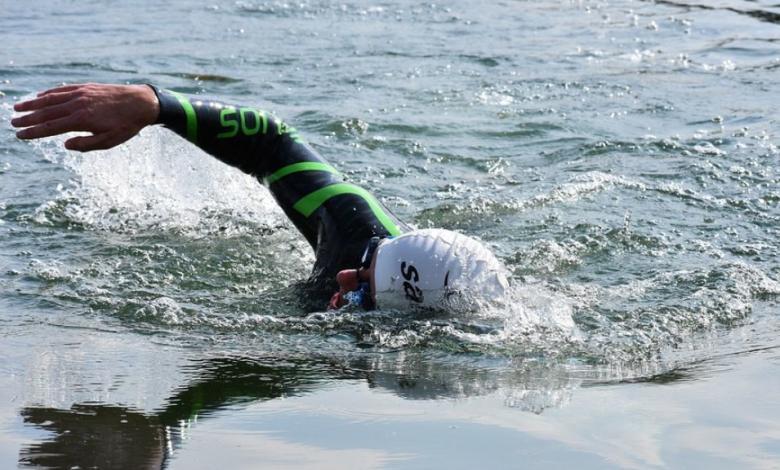3 open water workouts

It's time to train in open water, and so that it is not monotonous we offer you 3 workouts to work on different very important objectives for triathlon and open water swimming.
Aerobic resistance
The training apparently simplest of all, but for which you must know your rhythms or training zones.
With this type of training we will seek improve aerobic capacity plus work the adaptation of the musculature to the repetitive gestures of the stroke.
- Heating: 5 ′ joint mobility + 5-10 ′ continuous swimming, very comfortable rhythm
- Main part: Continuous swimming according to level 2-3Km aerobic rhythm, that is, a rhythm that requires a slight effort, but can be maintained constantly. To start you can also segment it in series of 500 meters with short breaks (30 ″ approx).
- Back to the calm: 2 ′ very soft swim. If possible do it without neoprene (If you have used it in training) or insert other styles (breaststroke, back).
Fartlek
If you have already participated in a triathlon or trek, you will have discovered the advantage of swimming in a group versus doing it alone.
However, on many occasions the rhythm of the group is not constant or in certain turns we must make a change of pace so as not to get off the hook.
This type of training will help you in that regard.
- Heating: 5 ′ joint mobility + 5-10 ′ continuous swimming, very comfortable rhythm
- Main part. Depending on whether you can estimate it by distance or by time, we leave you 2 options:
- Meters option: 4 x (100m comfortable, 50m fast, 100m medium, 200m comfortable) / 30 ″
- Time option: 4 x (2 ′ comfortable, 1 ′ fast, 2 ′ medium, 4 ′ comfortable) / 30 ″
- Back to the calm: 2 ′ very soft swim. If possible do it without neoprene (If you have used it in training) or insert other styles (breaststroke, back).
Orientation
Another very relevant aspect in open water is the orientation within the circuitBecause each meter you swim more will be a gift for the rest of the competitors in addition to extra fatigue for you.
With this type of training we will seek the proper display frequency from the buoy to avoid deviating from the shortest path.
- Heating: 5 ′ joint mobility + 5-10 ′ continuous swimming, very comfortable rhythm
- Main part. Look for static landmarks (buoy, rock with a certain shape, house, etc.). Position yourself at an approximate distance of 400-500m, because if we are too close it will be very easy:
- 3x500m / 30 ″: visualize target every 4, 6 and 8 strokes respectively in the series
- 1x800m: Apply the display frequency that has best suited you to another reference point at a further distance
- You can also play with different swimming speeds to check if the orientation changes when you increase the speed. If so, it is possible that a technical error has a lot to do
- Back to the calm: 2 ′ very soft swim. If possible do it without neoprene (If you have used it in training) or insert other styles (breaststroke, back).
To get more out of your open water training, we recommend using a GPS device that allows you to record the route, time, pace and stroke frequency.
These data may offer you objective feedback on your training and thus limit your weak points.
To continue improving in open water training, I advise you to consult the following articles:
- How to orient yourself in a straight line in open water?
- Tips to stay calm in a moment of stress in open water
- Open water training during the alarm state

Dra. Science of Physical Activity and Sport
There are no previous results.





























